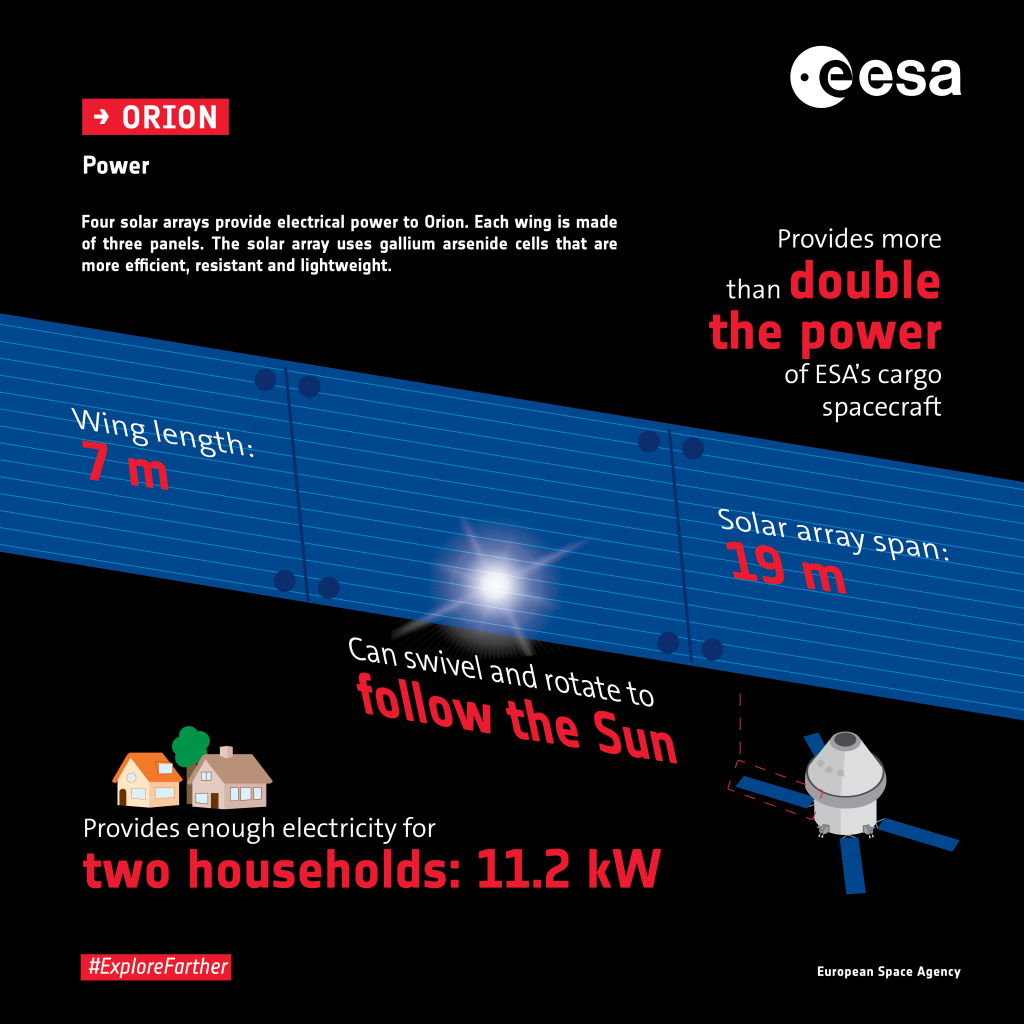The last major hardware to be installed on the European Service Module that will power the Artemis astronauts around the Moon is the four 7.5-m long solar array wings. For shipping convenience they are transported from Europe to NASA’s Kennedy Space Center in Florida, USA, separately from the European Service Module itself.
The four solar array wings, often abbreviated as SAW, flew across the Atlantic in a box with the four wings folded and individually packed inside on a commercial cargo aircraft and landed on 28 February in Miami. The wings were then transported by truck the 350 km journey to the North along the Atlantic Coast to arrive at Kennedy Space Center on 1 March.
Although great care was taken in transport, several tests were done to ensure the Artemis II mission will be able to spread its wings and start collecting photons from the Sun to turn them into electricity. The solar array wings are stored, and installed folded like a concertina so that they will fit inside the top of the mega Moon rocket SLS. Once launched and in Earth orbit the first thing the European Service Module will do is to deploy the solar arrays.
On 17 March technicians at Florida spaceport’s Neil Armstrong Operations and Checkout Building unfurled one by one the four wings confirming all mechanisms operate as expected. Guides are used to support the wings as they are designed to work without gravity, and testing on Earth requires this assistance.
The solar array wings are made in The Netherlands at Airbus, close to ESA’s technical heart ESTEC, that also houses the ESA’s European Service Module team.
Selfie SAW
Interesting to note is the black box on the right of the solar wing, that’s one of the cameras placed on the end of the wings that take the amazing European Service Module selfies, as seen on the Artemis I mission. They are connected by a wi-fi network to Orion and the images are sent to Earth through the S-band antenna on the Crew Module antenna.
The four wings will now be attached to the European Service Module-2. The service module is going through its own tests, a barrage of sound is being projected at the hardware to see how it withstands to the vibrations of launch. The tests will continue as the module will then be in full launch configuration – minus the Orion crew capsule that is escaping the sound treatment for now.
Artemis II is the first crewed mission on humankind’s path toward establishing a long-term presence on the Moon. The mission will send NASA astronauts Reid Wiseman, Victor Glover, Christina Hammock Koch, and Canadian Space Agency astronaut Jeremy Hansen on a 10-day flight around the Moon.
Artemis II will launch on NASA’s Space Launch System rocket, prove Orion’s life support systems that are supplied by the European Service Module-2, and validate the capabilities and techniques needed for humans to live and work in deep space.



 Automated Transfer Vehicle page
Automated Transfer Vehicle page ATV blog archive
ATV blog archive
Discussion: no comments